We started introducing solid baby food into Fischer’s diet around five and a half months. Since the beginning I’ve been making it from scratch at home and find it to be quick, easy and even a little bit therapeutic. 🙂 So far, Fisch has had homemade avocado, green beans, roasted peaches, apples with cinnamon and roasted pear purees. His favorite seem to be, hands down, the peaches and his least favorite are, most definitely, green beans lol!
Now, these purees are stage 1 foods and are the precursors for more mature recipes to come. I’ll outline the next set of recipes we try later on, but for now I wanted to show you how easy it is to make healthy and simple meals for your little one!
supplies and ingredients.
Before we get started, here are the supplies I use to make baby food here at home. Most of these things you probably already have, but I’ve provided links to the things you may not.
- Blender
- Silicone freezing trays
- Vegetable peeler
- Glass baby food container
- Cutting board
- Sharp knife
- Baby spoons
- Glass baking dish
For this specific batch of baby food, these are the ingredients I used:
- Peaches
- Apples
- Sweet potatoes
- Green beans
- Avocados
- Pears
- Water
- Whole grain organic rice cereal
- Ground cinnamon
recipes.
For each of these recipes, I blend up the purees and then pour the mixture into the silicone freezer trays. I then place them in the freezer. I recommend letting them freeze overnight to be sure they come out as a complete cube. The next day, I’ll remove them from the freezer trays and put them in a gallon size freezer bag. Whenever it’s meal time, I just take one out, put it in a glass jar and defrost it in the microwave. I then add a baby spoon sized scoop of rice cereal and mix it together. Voila!
Here are the steps involved with making each puree.
apples with cinnamon:
For this recipes, you can choose to include the cinnamon or not, but it’s perfectly safe and I love that it adds a little something extra to his food. He also seems to really love it! The steps for this are super easy:
1. Peel apples ( I usually do about 4-6 medium apples at a time)
2. Cut up into chunks
3. Put apple chunks in a pot and sprinkle 1/2 tsp cinnamon on top
4. Fill the pot up with water
5. Bring to a boil on stove and let cook for 10-15 minutes
6. Spoon apple chunks out of the pot and into a blender
7. Add about 1/2 cup of the water that was used to boil the apples into the blender (add more as needed) and blend until well mixed
8. Pour into the silicone tray and freeze
I use the exact same steps with sweet potatoes (usually without cinnamon, but you can use it with them if you’d like!)

roasted pears and peaches:
The only difference in these recipes is that I don’t peel the peaches, but I do peel the skin off of the pears before I cut them up and bake them.
1. Preheat oven to 375 degrees
2. Spray a baking dish with nonstick cooking spray
3. Cut each fruit in half, taking the core out of each
4. Place each piece of fruit flat side down in the dish
5. Bake for 30 minutes
If making peaches and you’d like the skins removed, let them sit until they’re cool. Then simply pull the skins off with your hands before moving on to the next step.
6. Blend up in blender, adding water as needed. (I usually add a half cup at a time until its a consistency that’s easy to pour out of the blender… like a semi-thick smoothie.
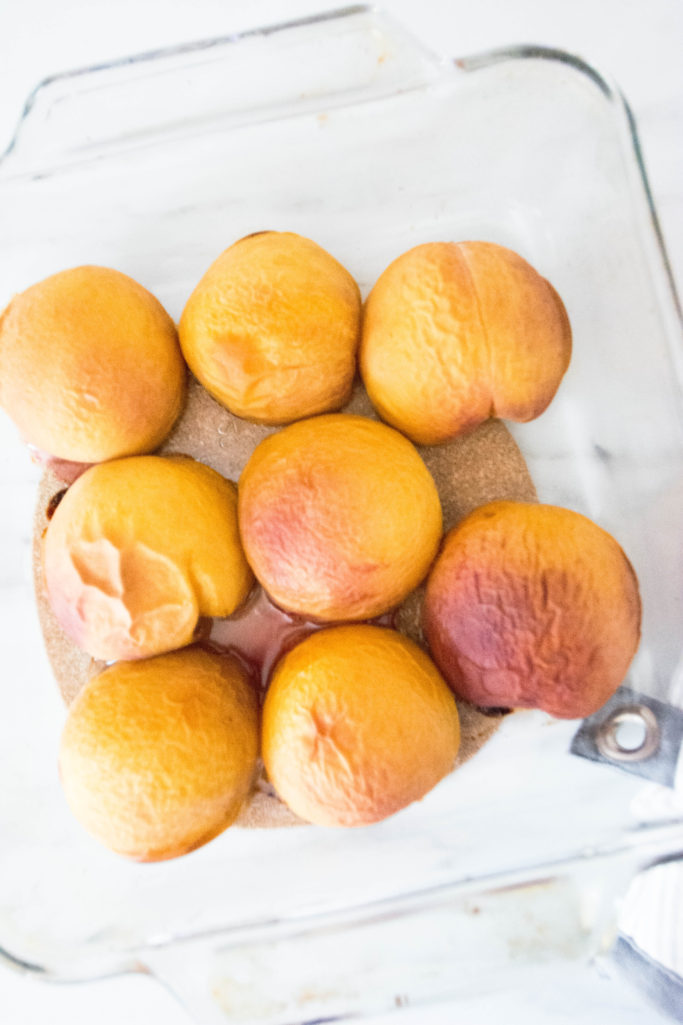
green beans:
These are really easy. I usually just buy a bag of frozen green beans. You can either steam them in the bag or boil them on the stove. If using the stove:
1. Pour green beans in a pot
2. Fill pot with water until the veggies are covered
3. Boil until the green beans are soft (about 10 minutes)
4. Keep some of the water from the pot to use in the blender
5. Strain the veggies and put them into the blender
6. Add water as needed
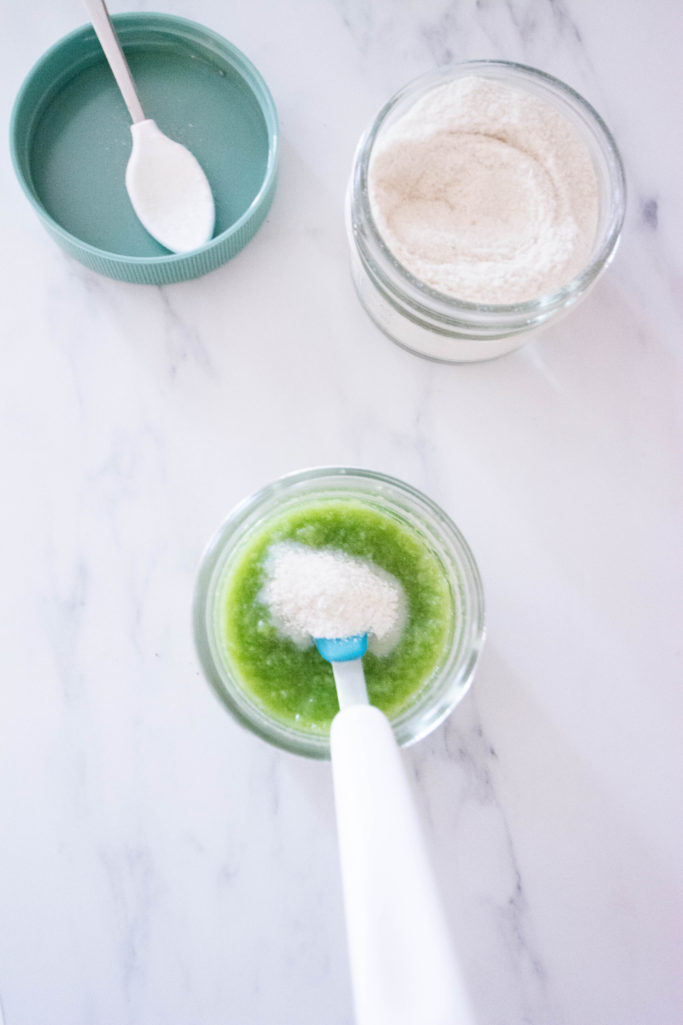
avocados:
Avocados are probably the easiest of all to make.
1. Cut the avocado in half and remove the seed in the middle.
2. Remove the skin using a spoon or your fingers.
3. Put the avocado in the blender
4. Add water and blend
Avocados use more water than the other fruits and veggies to get to a pourable consistency. Don’t worry, just keep adding about a 1/2 cup at a time until you get the desired consistency!
You can use these methods on so many more ingredients, these are just the ones I’ve used to make baby food so far! Some other ideas include: blueberries, carrots, broccoli, raspberries, bananas, prunes, etc.! Of course, check with your pediatrician before feeding your little solids and ask them for any specific instructions. Of course, once your baby has tried different ingredients on their own, it’s safe (and fun!) to start mixing different things to create new flavors.
how much and how often.
I’ve been getting a lot of questions lately about this subject, including how much we feed Fischer at each mealtime. My loose answer to that is about 2 ounces but I really don’t measure precisely and it varies according to his appetite, mood, etc. He started out eating just 1 ‘cube’ from this silicone freezing tray, but lately he’s been eating more like 1.5 – 2 cubes. As for how often, he is currently eating breakfast and dinner. Lunch will be added in a little later.. maybe around 9 months. We’ll see!

Hope this post was helpful for you mamas! Let me know if you have any questions or need clarification on anything.
shop the post.
pin. share. save for later!




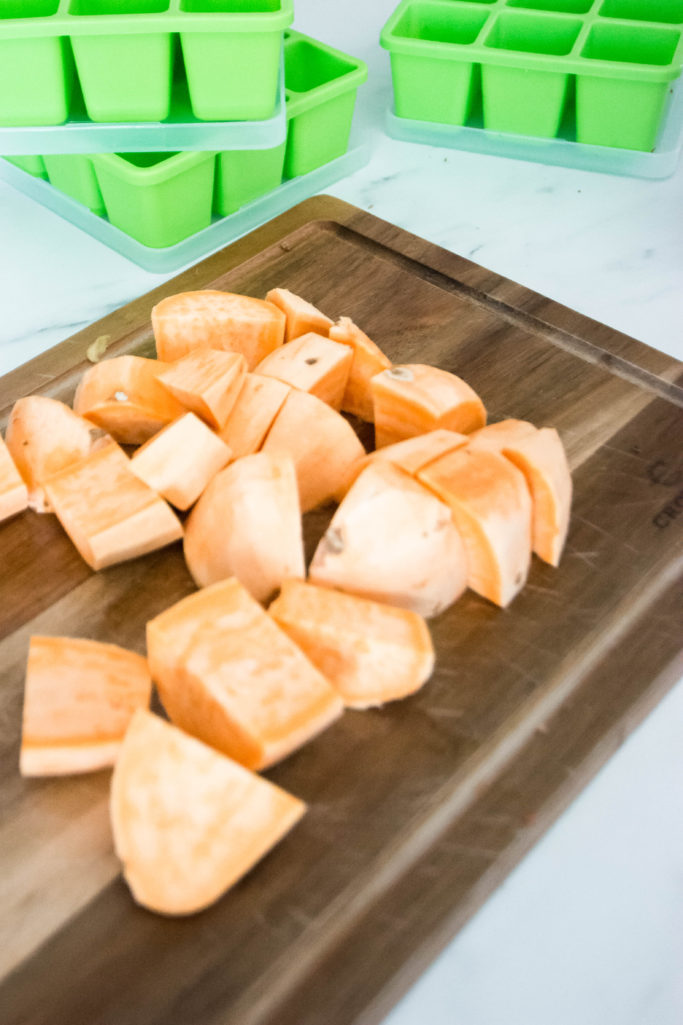
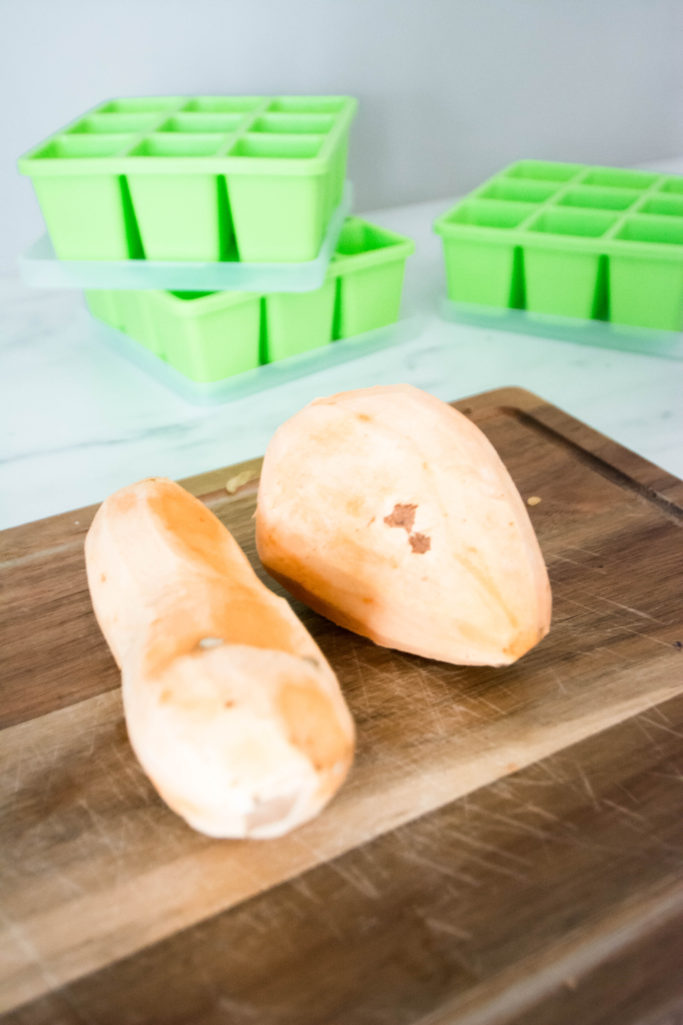
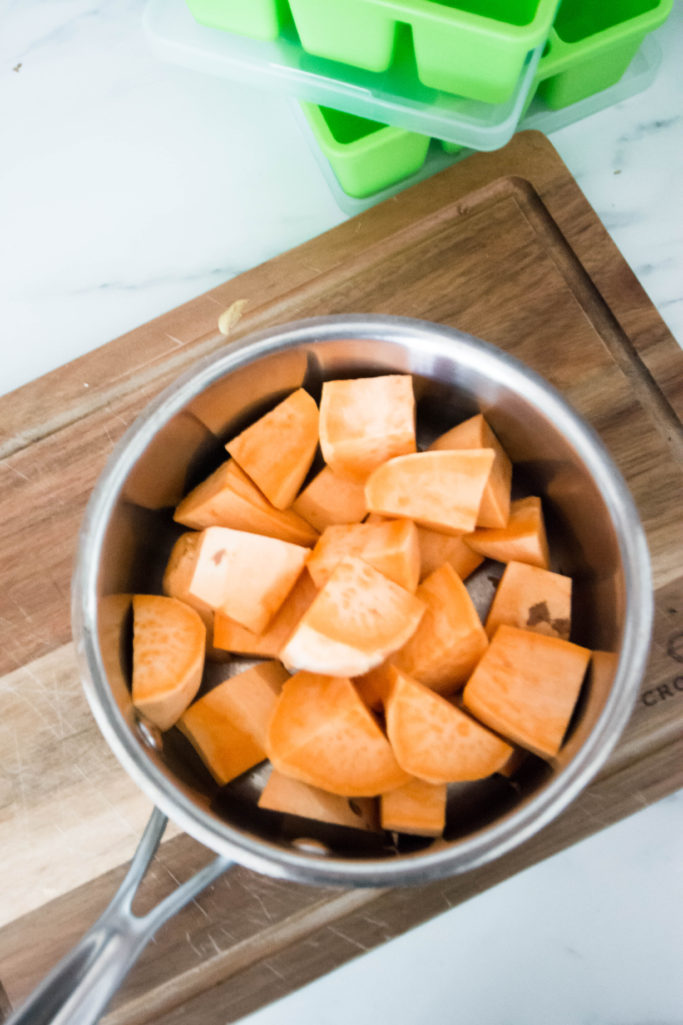
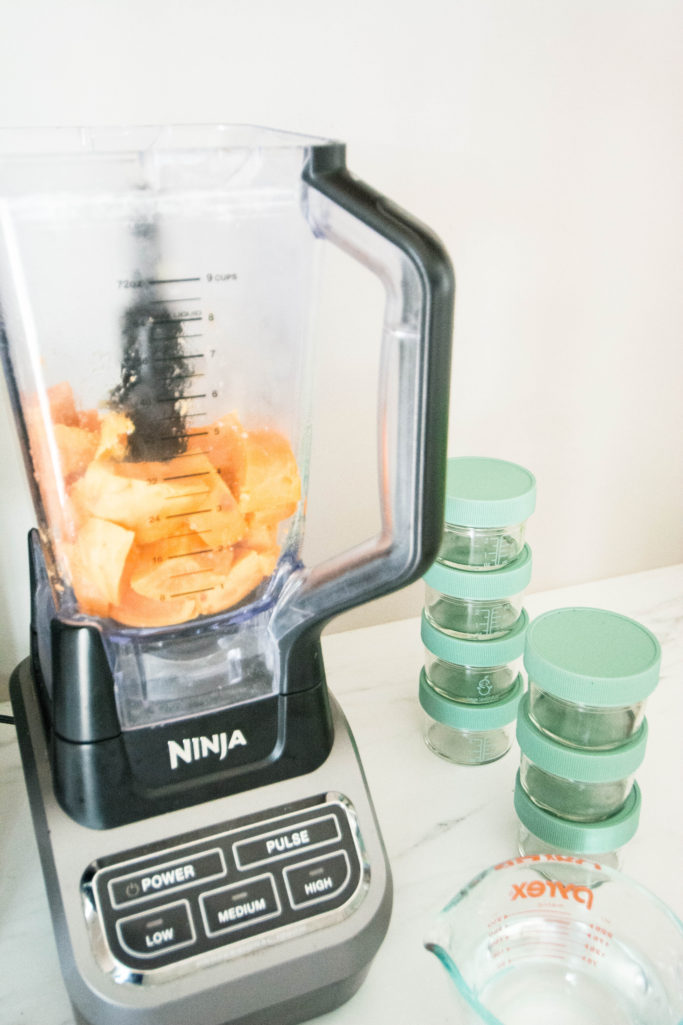
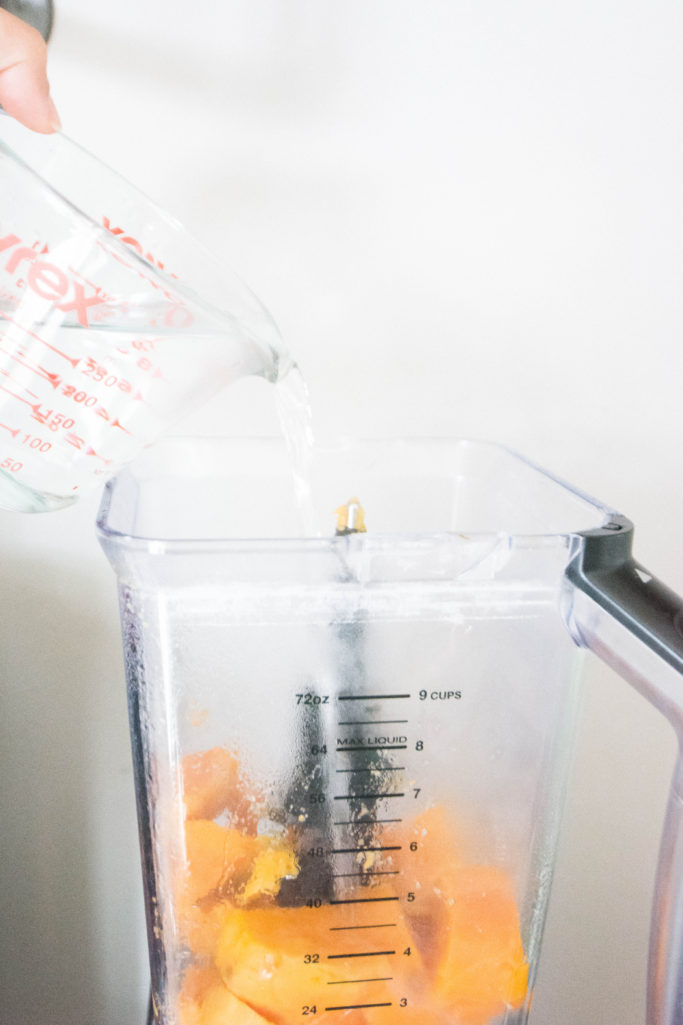
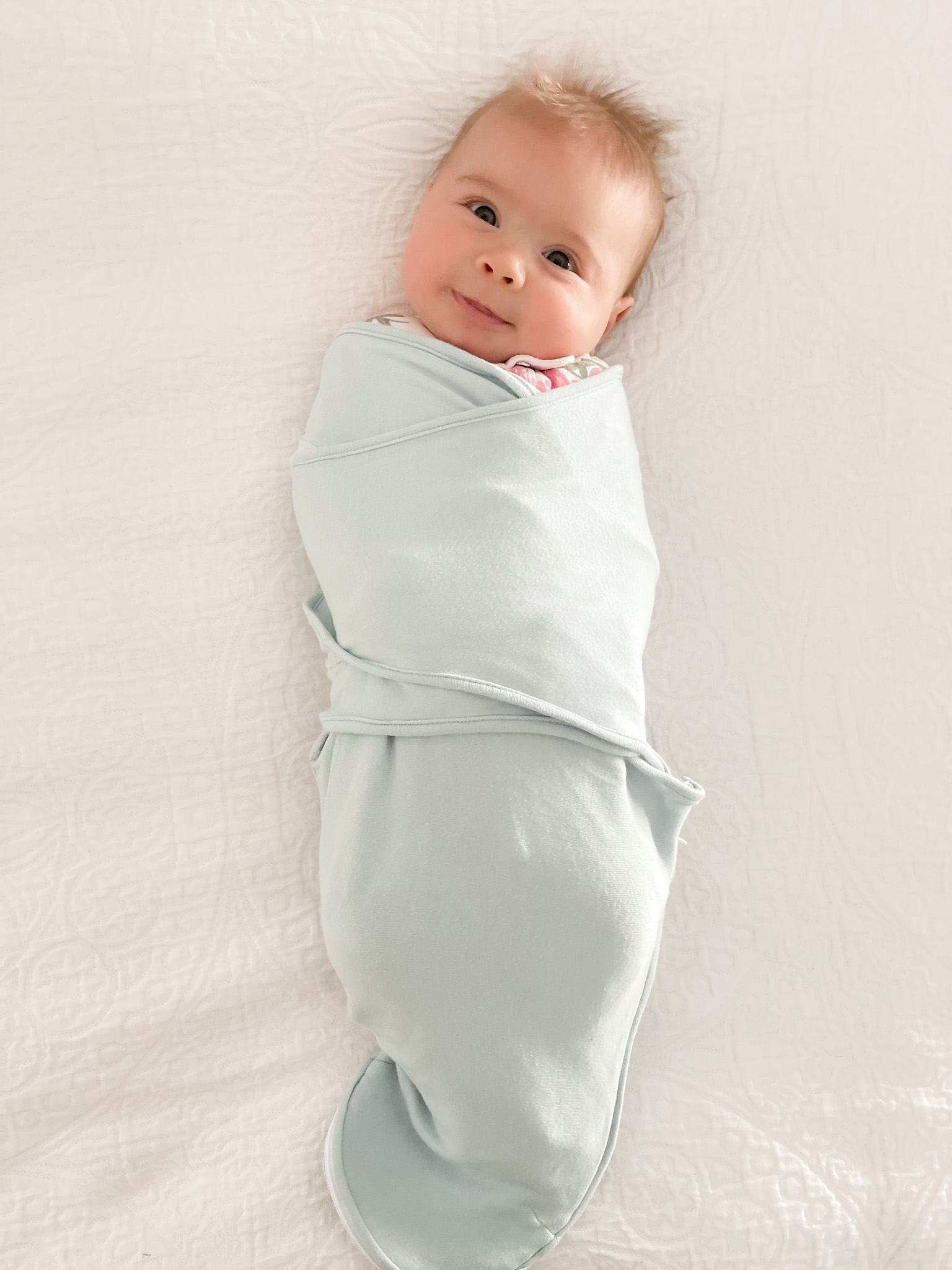
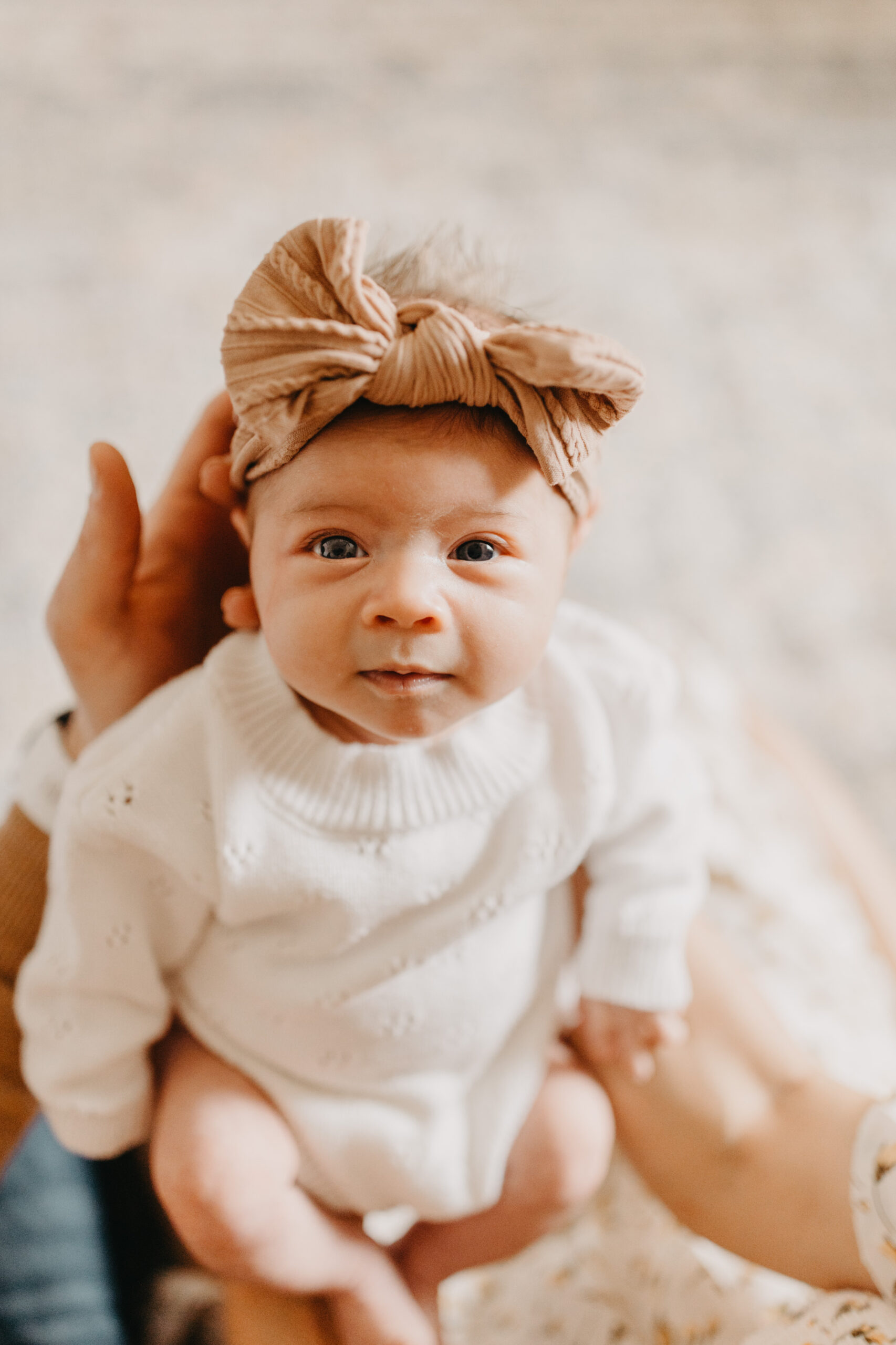



Does the avocado purée get black leaving it in the refrigerator ?
yes, it’ll turn brown, but you could always add some lemon or orange juice to keep it green!
How do you heat them up frozen? Just microwave?
Yes! I let it thaw overnight in the fridge and then microwave in 10 sec intervals to warm through.
Where do you use the rice cereal and how much?
After I heat it up I add a (baby) spoonful or two just to thicken it up a little!
What is the powder in the green bean photo?
It’s just a little rice cereal!